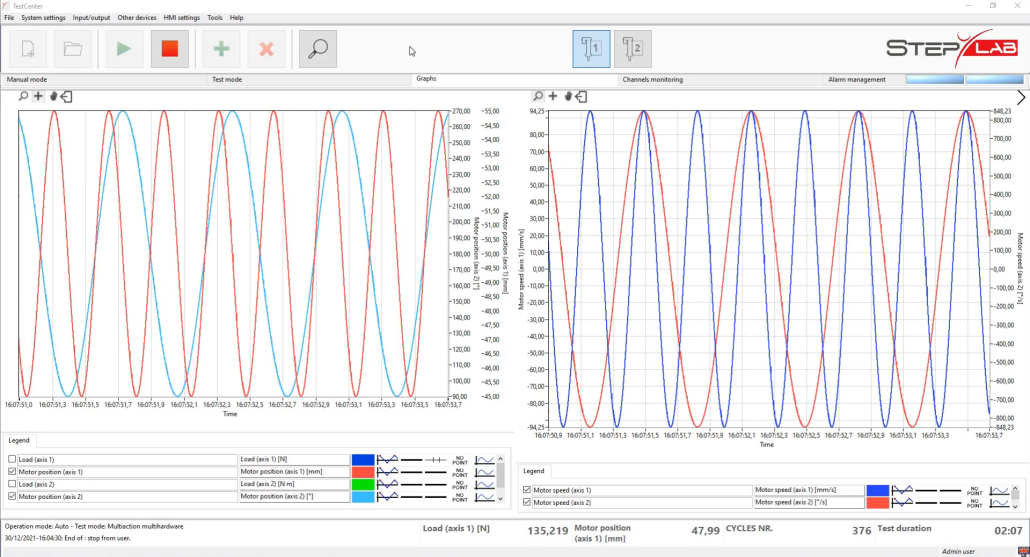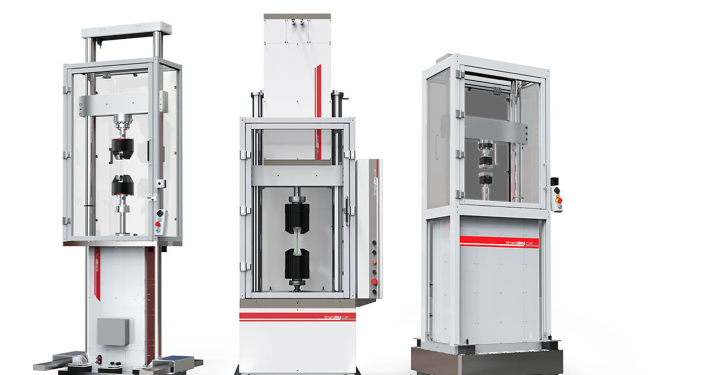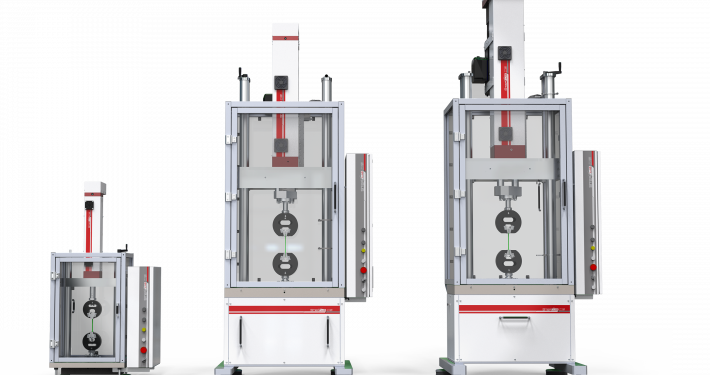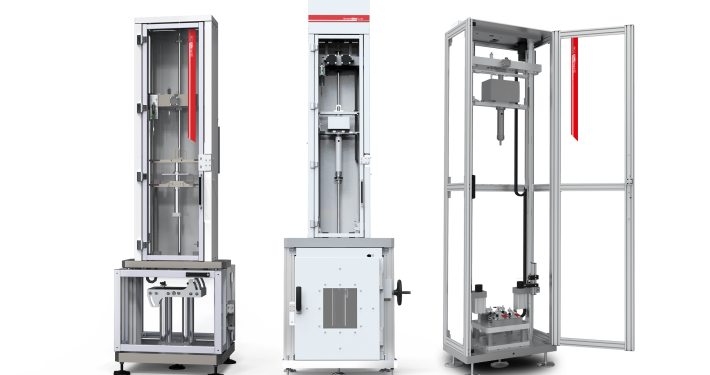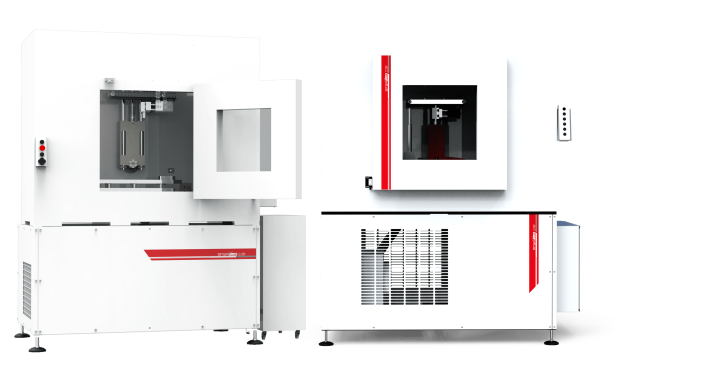A dynamic mechanical test module for shock absorbers of any vehicle, our software is organised to be easily adapted to each type of test according to the main international standards. The programme is organised to offer you editable presets of the most common tests or allow you to quickly customise your test.
Duration
Characterisation
Testing with incremental temperatures
Quality verification
Test management for shock absorbers
Meet a full spectrum of performance, durability and quality assurance testing needs with STEP Lab’s comprehensive portfolio of shock absorber testing software. Designed to support STEP Lab’s growing complement of electric shock absorber test systems, these programmes offer comprehensive test creation, efficient runtime and data acquisition, automated reporting and numerous methods for presentation and analysis.
Data acquisition and screen
It monitors dynamic properties against time or fatigue cycles.
- Samples the specified strength, length and phase relationship of the input signals
- Calculates and displays fundamental properties: K*, K’, K”, Phase, Tan Delta, Damping, Total Energy, Displacement and Load Amplitude
- Supports limit control to trigger appropriate actions
- PWM channel management for active dampers.
Performance Testing
STEP Lab Damper Testing software enables a full range of damper performance testing requirements, from basic to advanced.
For basic performance tests, just click on a few configuration windows:
- Selects the waveform required to excite the sample
- Defines the number of test cycles
- Set the number of data collection cycles
- Select the test results to be displayed
For advanced performance testing, the software allows easy modification of the type and form of excitation applied to the sample:
- Change the frequency or speed of the cycle
- Defines final levels
- Creates complex and integrated excitation passages
Incremental temperature test: predefines the temperatures at which performance data are acquired to accurately simulate shock absorber performance in real working environments
Temperature monitoring: measures the temperature of the sample during the test
Side load: applies a controlled force on a sample to simulate field conditions more accurately
Speed conservation: achieves precise final sinusoidal velocity levels
Endurance testing
STEP Lab software makes it easy to scale an endurance test to meet specific requirements, from the simplest endurance test to complex failure studies:
Complete set of command waveforms:
- Sinusoidal
- Ramp
- Sine-on-Sine
- Ramp-on-Ramp
- Cyclic blocking.
- User-defined profiles
- Waveform compensation – peak valley compensation, amplitude phase control, peak valley phase
Duration of the bumper jolt: accurately replicates a specific bumper jolt force over a predefined number of cycles
Water cooling: ensures temperature stabilisation during the entire test sequence
Lateral loading: apply a controlled off-axis force on a sample to simulate real-world loading
Quality Assurance Testing
The STEP Lab software provides the tools to create an intuitive and user-friendly operator interface to perform efficient pass/fail quality checks.
The pass/fail data of each test damper is stored as a tab-delimited data file and may include:
- Sample name
- Date and time
- Overall pass/fail
- Pass/fail result for each scheduled test result
- Pass/fail for envelope curve
Reporting and analysis
Automated test results: test data, calculated results, and test information are saved in a test workbook for review and further analysis. Each test workbook includes a worksheet for each data file and a batch file. Tabular reporting options include:
- All test runs against all test conditions
- Multiple test runs against selected conditions
- Performing a single test against all conditions
Functions of the shock absorber analysis graph:
- Force vs. displacement
- Force vs. speed
- Gas force vs. displacement
- Peak force at peak speed
- Force at peak speed
- Speed at peak force
- Displacement vs. time
- Strength vs. time
- Speed vs. time
- Condition vs. time
- Peak force vs. temperature
- Combined time-displacement-speed
- Test results

